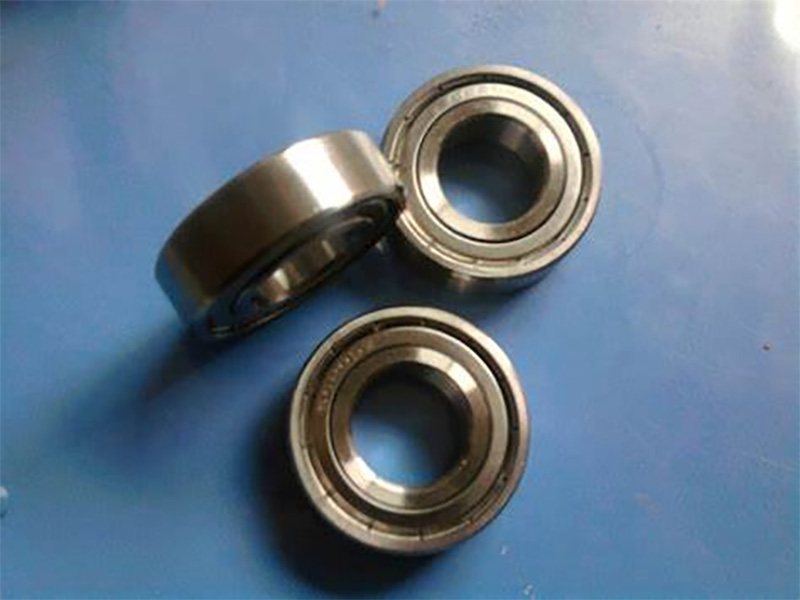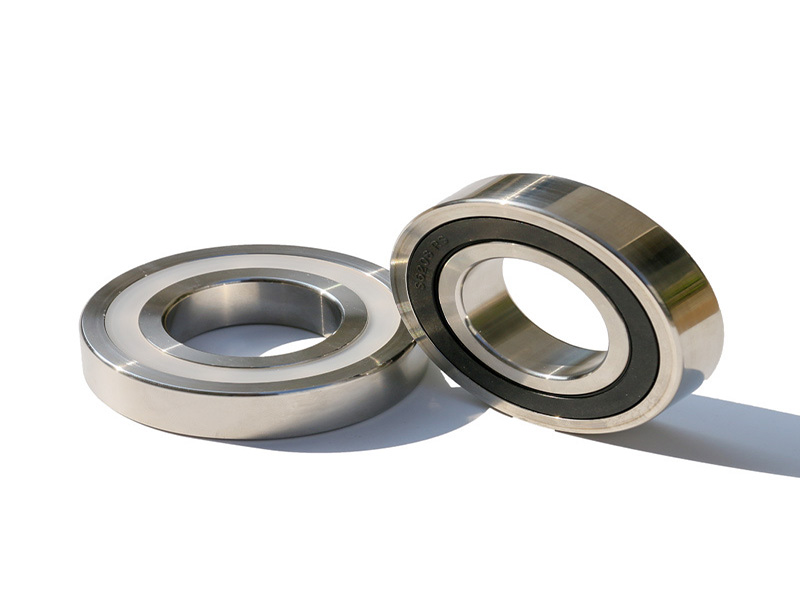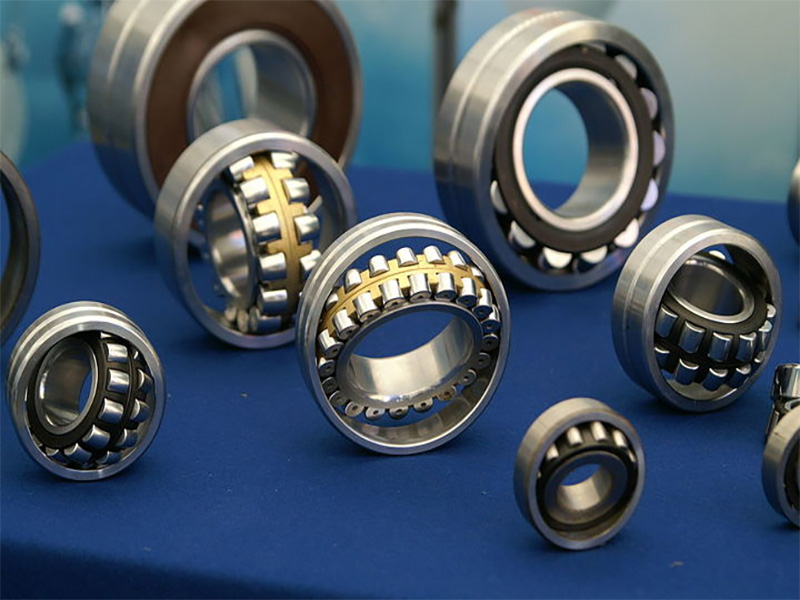

Annealing hardness of Bearing steel the hardness and structure of the annealed parts should be checked before heat treatment. GCr15: 179-207Hb (88-94HRB), others are 179-217HB(88-97HRB). If the hardness is unqualified (too high, too low or uneven), we should carefully analyze the cause, may affect the quenching (such as, hardness is not enough, decarbonization, overheating, ellipse, etc.).
Quenching and tempering hardness of Bearing steel
When the wall thickness is not more than 12mm, ≥63HRC after quenching and 60-65HRC after tempering; Customers may have special hardness requirements, such as 61-64HRC, but the hardness tolerance range after tempering should be greater than 3HRC; During normal quenching, the hardness value depends mainly on the tempering temperature.
Hardness uniformity: the standard stipulates that the hardness uniformity of the same part is generally 1HRC; When the outer diameter is greater than 200mm, 2HRC is less than 400mm; 3HRC when greater than 400mm.

Performance of unqualified hardness of Bearing steel
High hardness of Bearing steel high quenching temperature or heating time, cooling rate too fast, carbon potential (oxygen potential) high (carbon).
Low hardness of Bearing steel quenching temperature is low or heating time is short, cooling speed is slow, carbon potential (oxygen potential) is low (decarbonization), material decarbonization.
Uneven hardness: low quenching temperature or short heating time, slow cooling rate, material decarbonization, rod shadow.
Martensite of Bearing steel Under normal circumstances, the quenching temperature of GCr15 is about 840 ℃, generally not more than 850 ℃; the quenching temperature of GCr15SiMn is about 820 ℃, generally not more than 835 ℃. Too high or too low temperature can cause martensite to overheat or underheat.
Martensite standard 1-5 qualified (micro parts 1-3). Strict for 1-4, for small wall thickness (generally 6-7mm below) products can be 1-3.
The thickness of martensite is mainly related to heating temperature and heating time.
Bainite:
Bainite isothermal quenching materials are generally used for GCr15 and GCr18Mo. The effective thickness of parts processed by GCr15 steel is mostly controlled within 30mm, and GCr18Mo can be extended to 65mm.
Heating temperature: no matter GCr15 or GCr18Mo, the temperature is 865℃~890℃
Quenching isothermal temperature: Whether GCr15 or GCr18Mo, its Ms point is generally 225℃, so in practical application, the isothermal temperature is 235-245 ℃. Generally, the insulation time should not be less than 4 hours.

Grade 1-3 qualified according to JB/T1255 standard.
Bainite is mainly related to heating temperature and heating time, isothermal temperature and time
Troostite:
Troosite is a non-martensite or bainite structure produced when heating or quenching, generally we do not want it to exist, the standard provides that the effective wall thickness is not greater than 12mm, the heart is not greater than 1-2 level; When larger than 12mm, the outer center of the surface 3mm is not controlled, and a small amount of troisite is allowed within the surface 3mm.
Troisite is mainly caused by poor cooling or insufficient heating, which is the main reason for poor cooling.
The effective wall thickness of oil quenching is about 8mm.
The effective wall thickness of salt quenching is about 15mm.
Increasing the flow of medium, increasing the quenching temperature, increasing the clearance between parts or parts and tooling, adding water to salt can reduce the generation of trostite.
Sometimes can be found on the surface of troisite, but not in the heart, is generally caused by too much water content in the medium.
Residual austenite of Bearing steel
Residual austenite is caused by incomplete martensite transformation. Appropriate amount of residual austenite is beneficial to the life of parts. Generally 7-10% of quenching and tempering. About 4% after cryogenic treatment and 5-8% after cold water treatment. Special requirements can be up to 15-30%.
Generally reduce austenite requirements, to increase cold water treatment (line installed freezer), the lower the temperature, the less paralympics, reduce the residence time in the quenching medium, will also reduce paralympics. Residual austenite requirements less than 5%, to use cryogenic treatment (-70 ℃ – -90 ℃).
In the new standard, decarbonization and poor carbon are collectively referred to as decarbonization. In accordance with the standard bearing parts, certain decarbonization is allowed, but many factories have begun to require zero decarbonization.
Decarburization can be tested by hardness method or metallographic method, and metallographic method is commonly used in factories.
Generally speaking, the equipment factory is to ensure that 0.03mm, large parts within 0.06mm. Parts decarbonization is generally caused by atmosphere, such as furnace leakage, furnace pressure, carbon potential is low, gas contains more oxygen, methanol contains higher water.
Sometimes may be the legacy of decarbonization of raw materials, as long as the observation of different surface can be judged.

The deformation forms of bearing rings generally include ellipse, warping, taper and size expansion and contraction. No matter what kind of deformation is due to heating, cooling uneven or the original state is not good, resulting in uneven stress distribution reflection.
The ellipse is the most concerned by the factory. There are many reasons for quenching deformation. During quenching, factors such as raw materials/annealing/machining/heat treatment equipment/tooling/mold/charging method/process/furnace temperature uniformity/oil tank/quenching medium/part shape will affect the deformation.
For out-of-tolerance deformation products, it is not recommended to reshape; When the deformation is very large, it needs to be shaped; Products with high dimensional stability requirements are not allowed to be reshaped and directly scrapped.
In the automatic production line, molding is often used for quenching, please consider whether rotary quenching machine can be used.
The direction of salt flow can be considered to improve the elliptic deformation and taper.
The higher the temperature of quenching medium, the smaller the elliptic deformation, but the cooling capacity will decrease.
In general, high carbon chromium bearing steel ring is shaped after tempering. Carburizing bearing ring with mold shaping; Smashing is not allowed.
The shaping steps after tempering: the top tempering test of the top tempering unloading of the inner support belt. Never reduce steps. Improper shaping will lead to grinding deformation or finished deformation.
Regardless of other factors, the heat treatment equipment (roller hearth furnace) can currently meet the requirements of ellipse (for class 2, 3, and 4, excluding cold extrusion rings) :
The outer diameter of the ring is not more than 50mm, 90% of the quantity can reach 50% of the specified value,
Outside diameter of 50–120mm rings, 90% of the number can reach 70% of the specified value,
The outer diameter of 120–200mm rings, 90% of the number can reach 80% of the specified value,
Attention should be paid to the abnormal factors of individual products (3%).
GB2828 sampling and determination scheme can also be used, generally according to GB2828 standard sampling determination, where the inspection level is ⅱ, AQL value is 4.0 size expansion and contraction:
Normal size expansion and contraction is the normal law of heat treatment, if there is no external force constraint, oil quenching diameter increased by 0.8-1.2 ‰, salt quenching diameter increased by 1.0-1.5 ‰. The larger the wall thickness increases, the larger the upper limit should be set. When the wall thickness is very thin, the swelling is very small, or even does not expand or shrink.
Pay attention to adjust the turning allowance.
There are many factors affecting the appearance of parts, such as atmosphere uniformity, atmosphere purity, furnace pressure, carbon potential, furnace structure, furnace body sealing, cleaning rust resistance, quenching medium and so on.
Generally, the workpiece is silver gray after oil quenching, and blue brown after salt quenching.
Appearance is not good general performance: face, spotted, rust, color is not correct.
Face: the previous cleaning is not clean, the furnace is low, the methanol flow is too large, the methanol contains water, the nitrogen purity is poor, the oil quenching feed mouth is poor tightness, and the furnace body is local leakage.
Spots: the former cleaning is not clean, the methanol flow is too large, the oil quenching feed mouth is poor tightness, the oil curtain is not good, the furnace body is local air leakage, salt accumulates in the upper part of the salt tank, salt impurities.
Rust: carbon potential (oxygen potential) is too high, carbon in the furnace, after cleaning rust resistance is poor.

For Further Details,Please Feel Free To Contact Us: